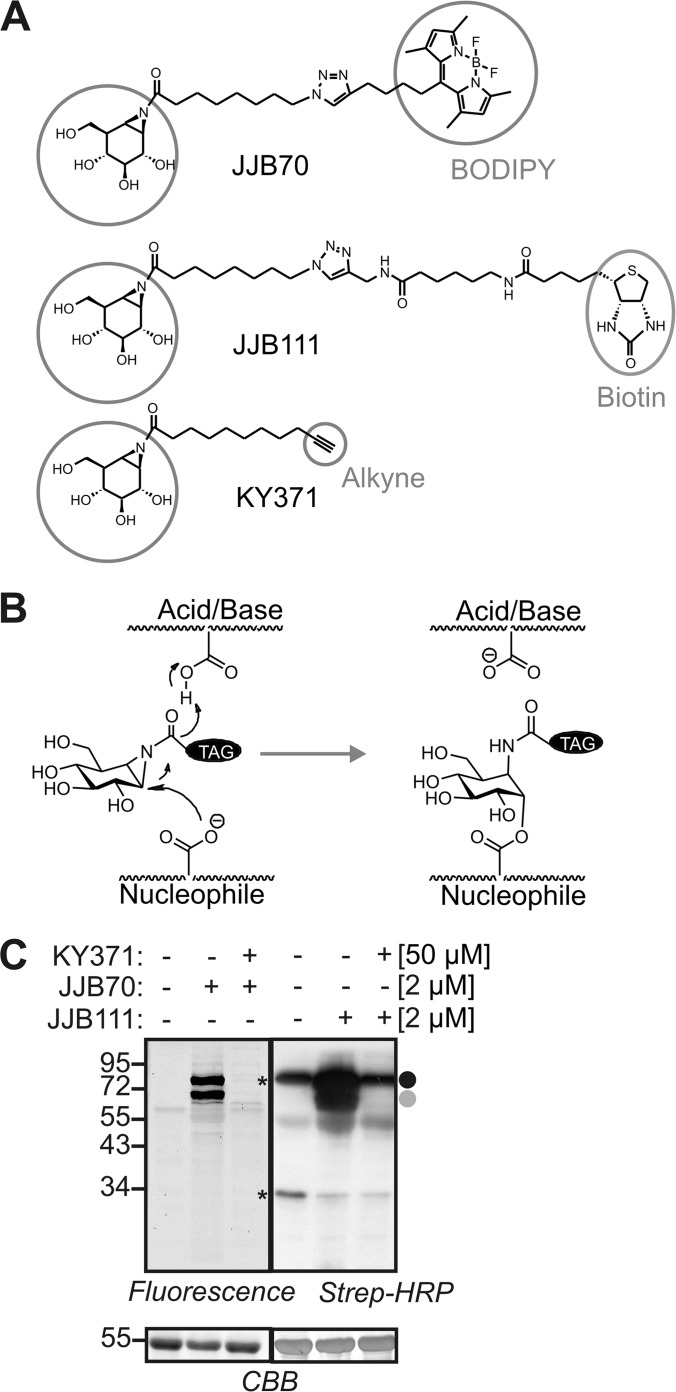Fig. 1.
Glycosidase profiling with cyclophellitol aziridine activity-based probes. A, Structures of cyclophellitol aziridine activity-based probes. All the three probes have an aziridine analog of cyclophellitol as warhead followed by a linker. JJB70 has a BODIPY fluorescent reporter tag. JJB111 has an extended linker and a biotin reporter tag. KY371 carries an alkyne minitag. B, Mechanism of labeling retaining glycosidases (Kallemeijn et al., 2012). The nucleophilic oxygen of one of the two catalytic glutamic acids attacks the electrophilic carbon next to nitrogen in the aziridine ring to form a covalent, reversible ester bond. C, Labeling profiles of JJB70 and JJB111 on Arabidopsis leaf extracts. Arabidopsis thaliana leaf exacts containing ∼1.5 mg/ml total soluble proteins were pre-incubated with and without 50 μMKY371 for 30 min and labeled with 2 μM JJB70 or JJB111 for 1 h at pH 7.5. The labeled proteins were either analyzed by in-gel fluorescent scanning (left) or detection on protein blot using streptavidin conjugated to horseradish peroxidase (strep-HRP) (right). The two major signals are indicated by grey and black circles; *, endogenously biotinylated proteins; CBB, Coomassie-Brilliant Blue.

